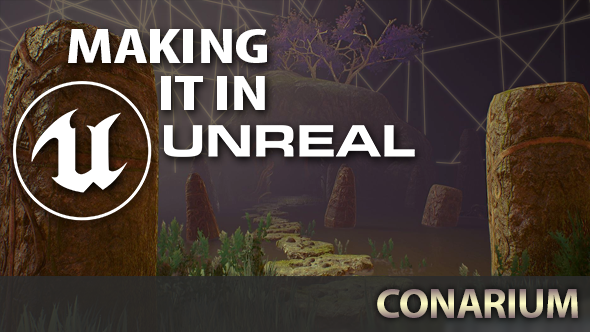
If the chief of your educational expedition known as Dr Faust, it’s best to comprehend it’s most likely not going to finish effectively. It actually doesn’t in Conarium, a first-person horror sport impressed by HP Lovecraft’s At the Mountains of Madness.
Read extra: the best PC games of 2017 thus far.
After trying to go past the boundaries of human consciousness, the participant wakes alone in an Antarctic base with unusual and sinister reminiscences. From there it’s a matter of exploring the bottom, learning its secrets and techniques, and passing by means of to alternate realities – all whereas avoiding the macabre locals.
Three builders in Istanbul have dedicated themselves to the duty of translating Lovecraft’s ambiance of historical malevolence and existential horror into Conarium – with out resorting to octopus imagery. Here’s how they bought on.
A splash of color
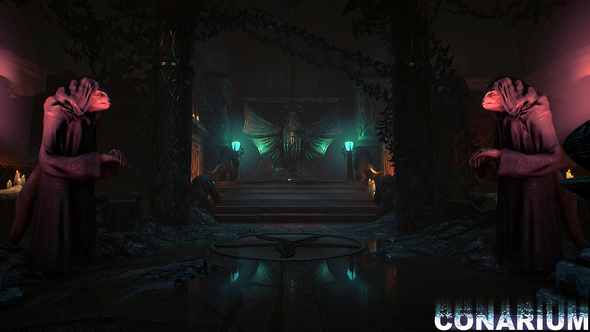
Horror video games have a popularity for principally sticking to a two-tone palette of white mild and pitch black, with the occasional flash of purple if one thing’s gone actually fallacious. Conarium, against this, is filled with vibrant color – turquoise lamps that talk of the ocean, and lilac timber that counsel nature is odder than you’d beforehand imagined.
In truth, lighting is the first cause Zoetrope Interactive adopted Unreal Engine four.
“We decided we could only use an engine with physical-based shading because we want to make a really immersive, atmospheric game,” remembers developer Galip Kartoğlu. “Our old in-house engine was not capable of doing that.”
Unreal four’s physically-based shading algorithms approximate the real-life impact of sunshine because it bounces off the supplies round it – as an example, the mirror-like specular reflection on a marble flooring. The benefit to builders is that it’s predictable and requires a minimal of tweaking.
Zoetrope are using the engine’s dynamic lighting in an uncommon means, nevertheless. They’re not trying to mimic real-life a lot as noirish horror – which is why they’ve caught to the rules of low-key lighting whereas crafting their Lovecraftian environments.
No lights, digicam, motion
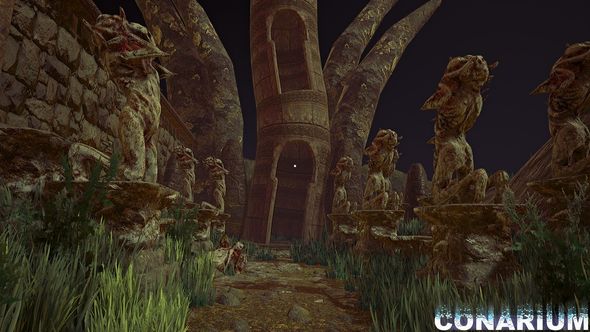
“In low-key lighting there’s a lot of difference between the dark and lit areas,” Kartoğlu explains. “Because you are just using a main light, and the fill lights are not very powerful.”
In images and cinema, fill lights are usually used to scale back the distinction of a scene, in order that shadows seem as they’d in regular mild. But low-key lighting does away with them, relying nearly wholly on one level of illumination. The shadows it throws are deep and darkish, and immediately dramatic – it’s the basic impact you’ll affiliate with movie noir.
In Conarium, the fill lights which might be there are unusually vibrant – flooding its alternate worlds with eerie character.
“It will actually look very dark and also very vivid at the same time,” says Kartoğlu.
Smashing conference
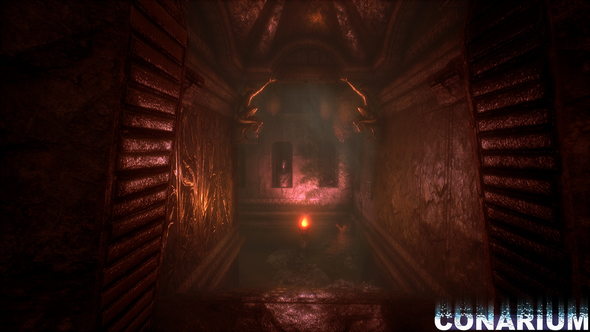
On event in Conarium, the participant might want to break down stone partitions utilizing an axe. Don’t ask why: it is a sport that’ll preserve its mysteries till launch day.
It’s notable as a result of destructible terrain is a little bit of an endeavor in a sport that’s not utterly constructed round it in the way in which that, say, Red Faction: Guerilla is. But it’s an endeavor Zoetrope voluntarily took on, eschewing the choice of pre-recorded animations.
“In games generally you hit a wall and you watch it break down,” notes Kartoğlu. “We didn’t want to do that.”
Instead, when the participant swings their axe towards certainly one of these partitions in Conarium, it breaks down into its constituent components.
“But this has some problems,” Kartoğlu admits. “Like debris obstructing the player’s movement.”
In testing, Zoetrope discovered that gamers may change into trapped by the chunks of wall they’d introduced down round themselves. So they’ve needed to develop a customized system that recognises which components of the wall mesh have damaged away from the entire.
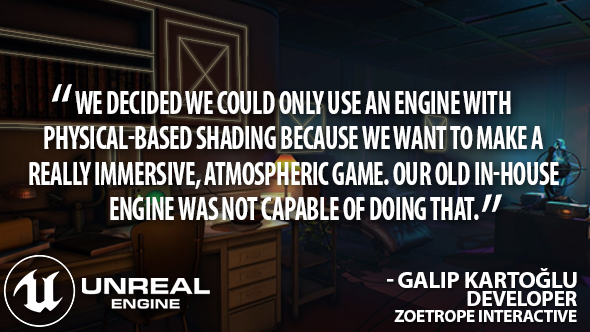
Once the sport is aware of that, it’s in a position to flip off collision in these boulders that hit the ground, stopping them from blocking the participant’s means.
“I’m now very happy with the result,” says Kartoğlu. “You really have fun breaking walls realistically.”
That success led on to spline meshes that block the participant’s path. Unreal four’s spline device permits a mesh to evolve to the terrain round it – in the way in which a mud path follows the curve of a hill or, on this case, the way in which an ivy-like plant grows to impede a hallway in a long-abandoned place.
“You can actually hit the plant with the axe and it reacts,” explains Kartoğlu, “and then opens the way for you. They are not just stuck in cardboard.”
It’s straightforward to think about that a lot of that groundwork may apply to otherworldly tentacles – however Zoetrope warn it’s not that type of Lovecraft sport.
“I hate to say we didn’t focus on tentacles,” laughs Kartoğlu. “We want to be respectful for his writing and style of atmosphere. We are idealistic about that.”
Conarium is about for launch on PC in 2017. Unreal Engine 4 is now free.
In this sponsored collection, we’re how sport builders are making the most of Unreal Engine four to create a brand new era of PC video games. With due to Epic Games and Tequila Works and QLOC.
Source


